Sheep Shearing on the National Mall
Washington in the 1910s was apparently the place for sheep. Over the decade, at least two herds were brought directly into the capital to graze in the shadow of the nation’s most treasured monuments.
The first herd came to be housed just south of the Lincoln memorial after a particularly stirring chat about polo in a Washington club, if you believe the Evening Star. Colonel William W. Harts was having lunch with some friends who were “chronically addicted” to polo. The friends managed to convince the colonel that nothing short of a full herd of sheep could create the perfectly trimmed polo field. Since Harts was the superintendent of the Bureau of Public Buildings and Grounds and he was in charge of the polo grounds for DC, and because likely his friends would not shut up about this sheep thing, he decided to look into it.
Harts approached the butchers of the city to see if any of them had a herd of sheep lying around and did any of them, free of charge, want to feed those sheep on government grass? As you can imagine, his proposal was well received. And so it came that in 1914, 100–250 animals were placed in West Potomac Park, just south of the Lincoln Memorial. During the day (between polo games) the sheep ambled about, eating to their heart’s content in the heart of the nation's capital. Colonel Harts was greatly pleased with the results, reporting: “It has proved an inexpensive and valuable innovation… The sheep have lived up to their reputation.”
The children of Washington were no less enamored with the animals, but were much more forthcoming with their praise: “Aint he the buttin-est sheep you ever saw?”[1]
While this first herd did very well for itself being adored by the local children and feasting on government grass, there was another herd that did even better. In 1918, President and Mrs. Wilson wanted to be the best example they could be for the nation. Involved in World War I since April 1917, the U.S. needed to step up food production for both the military and homefront. Driving through Maryland, President Wilson saw fields full of thoroughbred shropshires and, likely keeping in mind the kind of success Colonel Hart had had years before in the city, decided he had to have them for the White House lawn.
On May 1, 1918, eighteen prizewinning shropshire sheep began to munch serenely in the President’s backyard, on the Ellipse (which was called the White Lot in those days). They kept the grass short, freeing up men to join the war effort, and regularly provided their wool to be auctioned off to benefit the Red Cross — in 1919 raising as much as $30,000.[2]
The sheep, for all that they represented a “we’re just like you” move by the Executive, were probably the best cared for in the country. The Department of Agriculture was always on hand with doctors and experts should something even look at one of the sheep the wrong way. Consequently, there were very few casualties and their number had increased to 48 by the time President Wilson got ready to leave the White House in 1920 and prepared to auction the sheep off.
The roaring 20’s were, for whatever reason, the decade that Washington got over its flirtation with sheep herding. Wilson auctioned off the presidential flock, and the polo sheep were not mentioned again in the papers after 1915, the experiment evidently not repeated for a third year. Sheep as an asset for the federal government faded into obscurity, presumably not surfacing again until the nerdier employees got their hands on Settlers of Catan decades later.
Sources:
“President buys sheep to graze at White House.” The Washington Times. (Washington [D.C.]), 30 April 1918. Chronicling America: Historic American Newspapers. Lib. of Congress.
“Sheep grazing at White House all are ewes.” The Washington Times. (Washington [D.C.]), 01 May 1918. Chronicling America: Historic American Newspapers. Lib. of Congress.
“Sheep herding a success.” Evening Star. (Washington, D.C.), 10 April 1915. Chronicling America: Historic American Newspapers. Lib. of Congress.
“Sheep replacing lawn mowers on polo field.” Evening Star. (Washington, D.C.), 14 July 1914. Chronicling America: Historic American Newspapers. Lib. of Congress.
“Sheep turn monument lot into pastoral landscape.” Evening Star. (Washington, D.C.), 06 Dec. 1914. Chronicling America: Historic American Newspapers. Lib. of Congress
“Seven wabby lambs gambol about the White House lawn.” Evening Star. (Washington, D.C.), 27 March 1919. Chronicling America: Historic American Newspapers. Lib. of Congress.
“Type of lawn mower at Potomac Park.” The Washington Times. (Washington [D.C.]), 27 Sept. 1914. Chronicling America: Historic American Newspapers. Lib. of Congress.
“Wilson going out of sheep business.” The Washington Times. (Washington [D.C.]), 01 Aug. 1920. Chronicling America: Historic American Newspapers. Lib. of Congress.


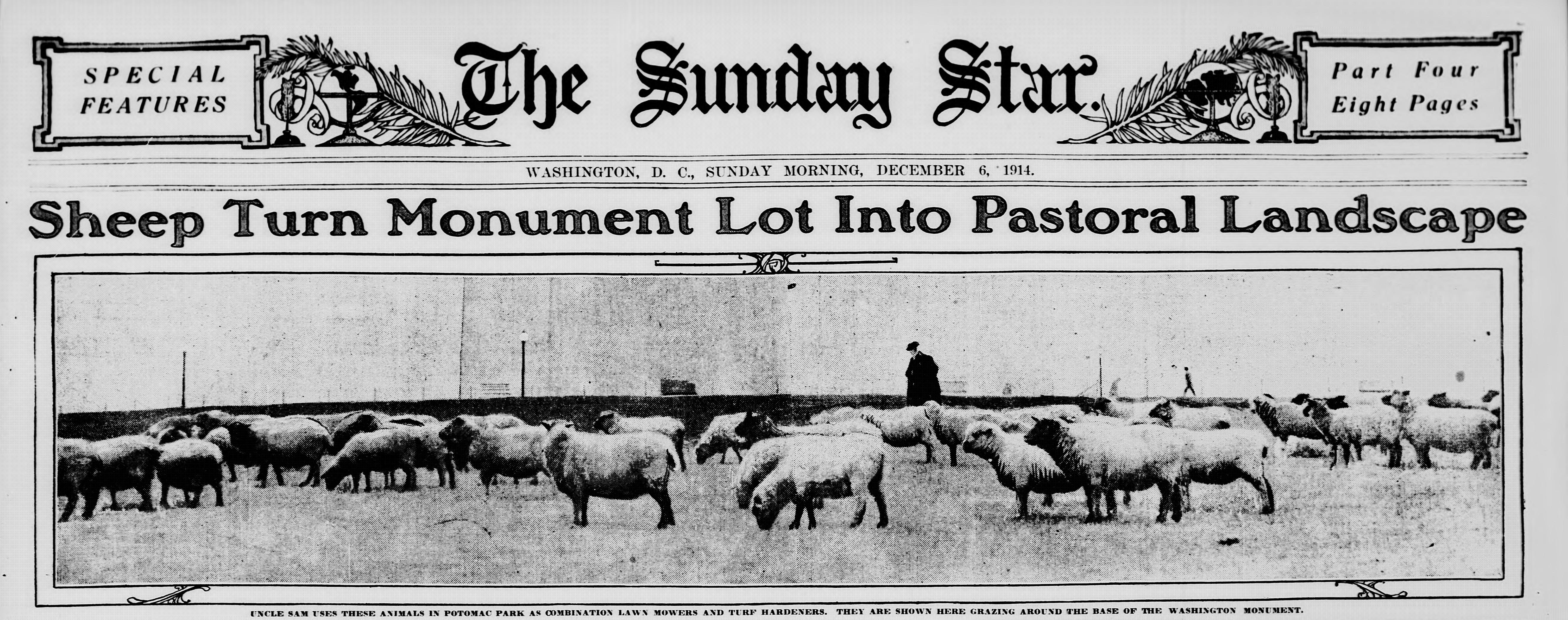
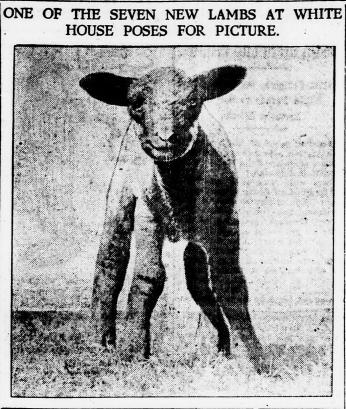
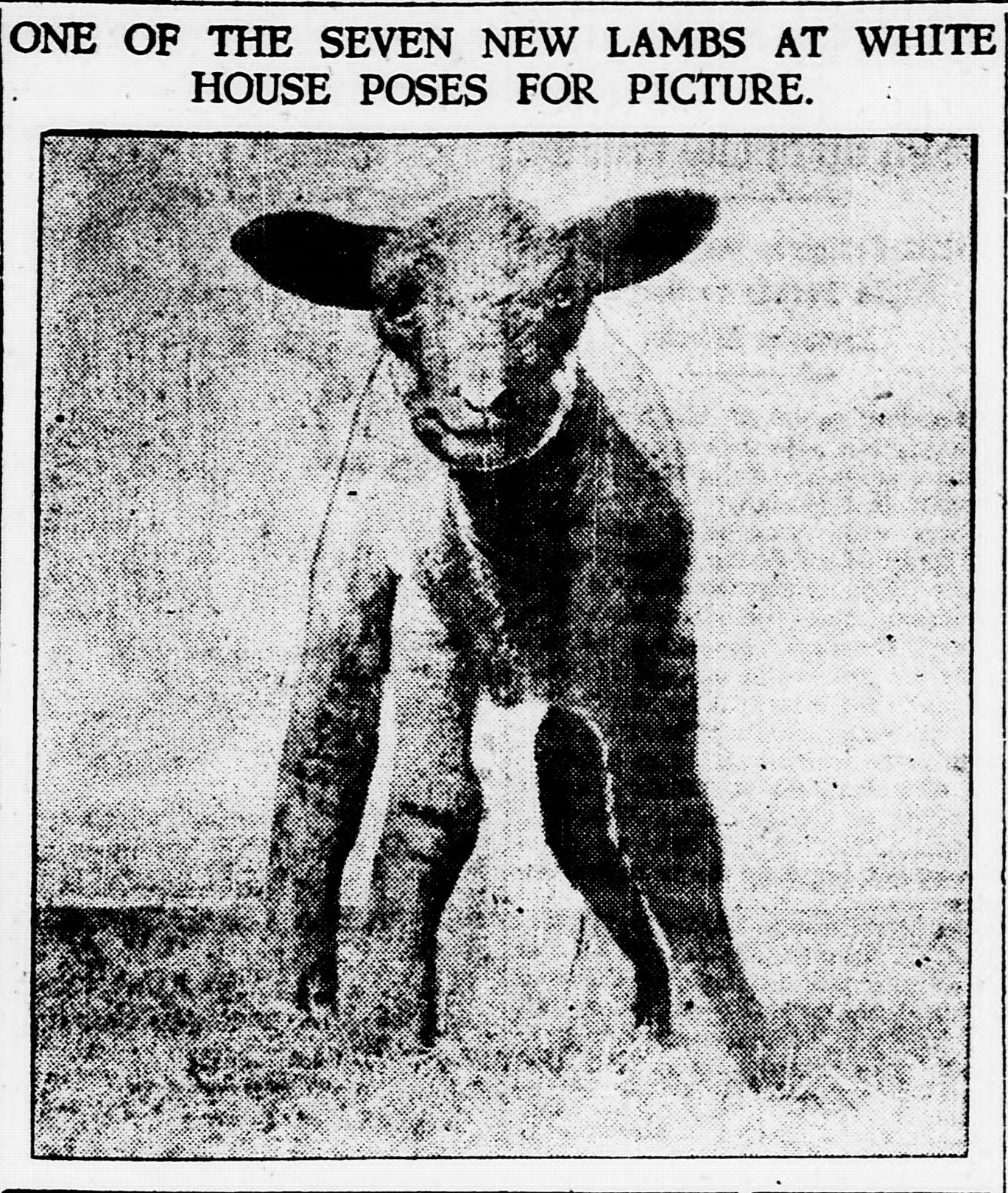
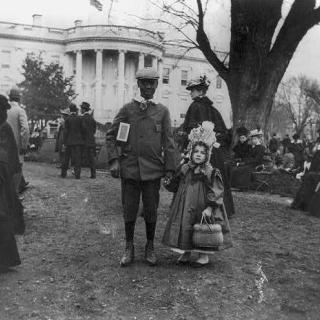
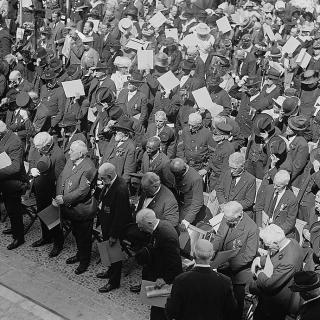
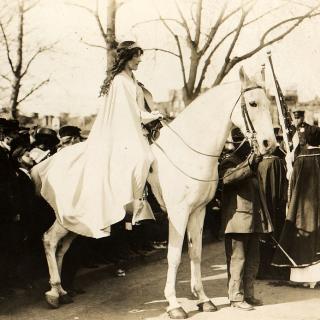
![Sketch of the mythical fuan by Pearson Scott Foresman. [Source: Wikipedia]](/sites/default/files/styles/crop_320x320/public/2023-10/Goatman_Wikipedia_Faun_2_%28PSF%29.png?h=64a074ff&itok=C9Qh-PE1)












